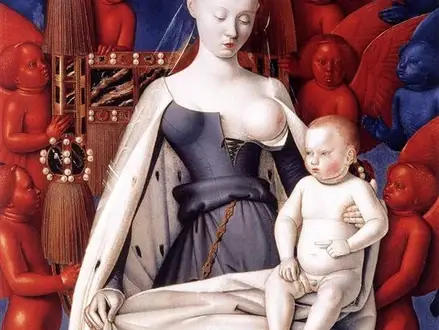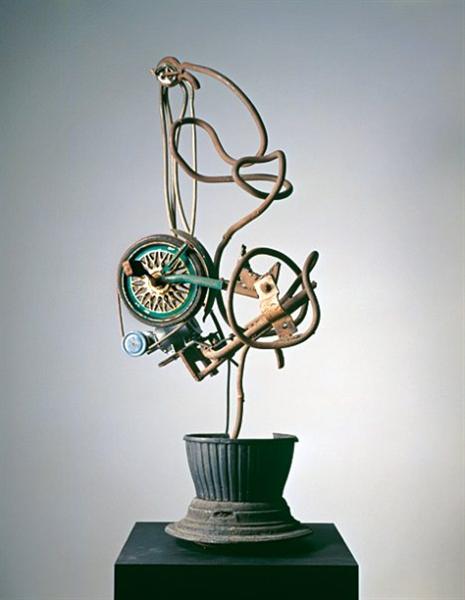Title of Artwork: “Madonna and Child. Left Panel of Diptych de Melun”

Artwork by Jean Fouquet
Year Created 1450
Summary of Madonna and Child. Left Panel of Diptych de Melun
Jean Fouquet (1425–1480), a French court painter, created the Melun Diptych around 1452. The diptych’s name was inspired by its original location in Melun’s Collegiate Church of Notre-Dame. St. Stephen appears in the left panel, where Etienne Chevalier is depicted with his patron saint, while cherubim surround the Virgin and Christ Child in the right panel. Each wooden panel is approximately 93 by 85 centimetres, and the two would have been hinged together at the centre. As a result, the original diptych is no longer complete. Berlin’s Staatliche Museen and Antwerp’s Royal Museum of Fine Arts house the left and right panels, respectively. The two panels are also connected by a self-portrait medallion. It is 6 centimetres in diameter, made of copper, enamel, and gold, and would have adorned the frame. Currently, the medallion can be found in the Paris Louvre.
All About Madonna and Child. Left Panel of Diptych de Melun
He kneels in a position of prayer on the left, the treasurer of King Charles VII of France, Étienne Chevalier. Non-aristocrats like Chevalier were considered more trustworthy by the king than nobles. St. Stephen, Chevalier’s patron saint, is depicted in dark deacon’s robes with gold trim on the right of the altar. Using his left hand, he holds a book and a jagged rock in his right, which represents him as he was being stoned to death. Both men appear to be looking at the Virgin and child on the other panel as if they were looking off to the right. The wall behind the treasurer and his patron saint is decorated with white and gold mouldings inlaid with marble panels. ” Neutral tile colours contrast sharply with the men’s robes’ brightly hued attire. “IER ESTIEN” is etched into the wall behind Chevalier to identify him. Since Fouquet never signed any of his work, this lettering has been used to identify the painting as his. Several miniatures are attributed to him, and this lettering is very similar to that used in them.
In the right panel, we see the Madonna and the Christ Child seated on a lavish gold throne. Madonna’s attire includes a blue dress, white mantle, and a crown adorned with jewels. Child sits on her lap and points to the patron and saint with his left hand, pointing to the patron and the saint. The Virgin and child are surrounded by cherubim of blue and red, which contrast greatly with their pale skin. According to historian Roger Fry, a “dreamlike state of sentimentalism” can be found in the paintings. The Madonna is depicted here as the Queen of Heaven and is meant to show her between the veil of Heaven and Earth. She is a mix of human and alien. The heraldic colours of the king, which are red, white, and blue, have been attributed to the unnatural colours. King Charles VII’s mistress Agnès Sorel is believed to have been depicted in the painting of the Virgin. “the most beautiful woman in the world” was an obvious choice for Sorel to model the Virgin Mary after.. She left her estate to Etienne Chevalier, the king’s minister of finance. She is compared to other images of Sorel, such as a painting by Fouquet in which her dress is very similar to that in the diptych. Catherine Bude, Chevalier’s wife, may also be the woman depicted in the diptych, which was hung over her tomb in Notre Dame, Melun, France.
Information Citations
En.wikipedia.org, https://en.wikipedia.org/.
























